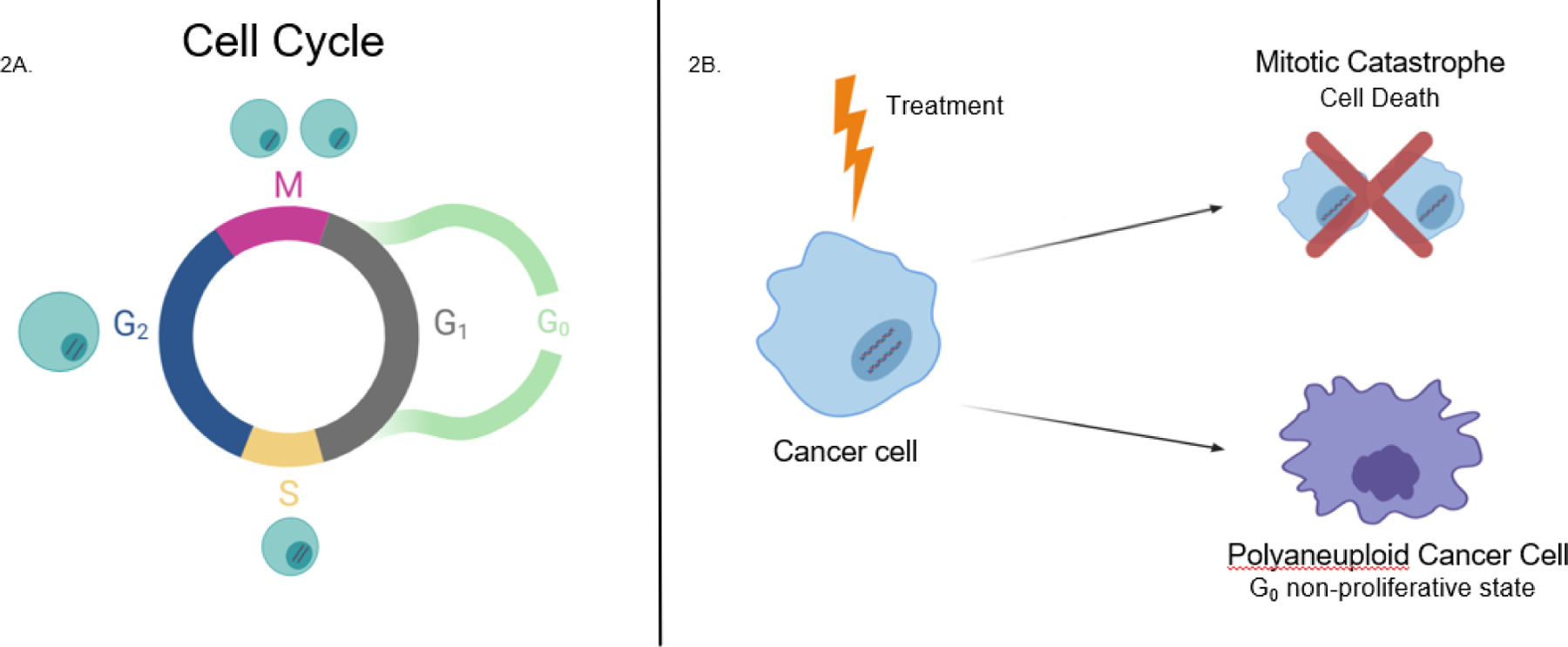Figure 2.

A) In a normal cell cycle, the cell will go through various stages of replication and growth in order to divide. In G1 (Growth 1), the cell will synthesize proteins and factors needed throughout the rest of the cycle, the cell will also begin to grow slightly in size. In S phase all nuclear DNA will be replicated, giving the cell two sets of genomic DNA. In G2 (Growth 2) the cell will continue to grow in size and produce new proteins that it will need in the division process. Ending in Mitosis, the cell will finally begin the process of division, splitting apart its DNA and organelles to give rise to two identical daughter cells, who continue the cycle back into G1. There is also a G0 phase outside of the traditional cycle, used as a protective non-proliferative state that the cell can use to exit the cycle to repair DNA damage, when necessary. B) A cancer treated with therapy has two possible fates: 1) attempt to undergo cell divide and apoptose due to mitotic catastrophe, or 2) escape the cell cycle and not complete mitosis or cytokinesis and enter the protective G0 state as a PACC.
